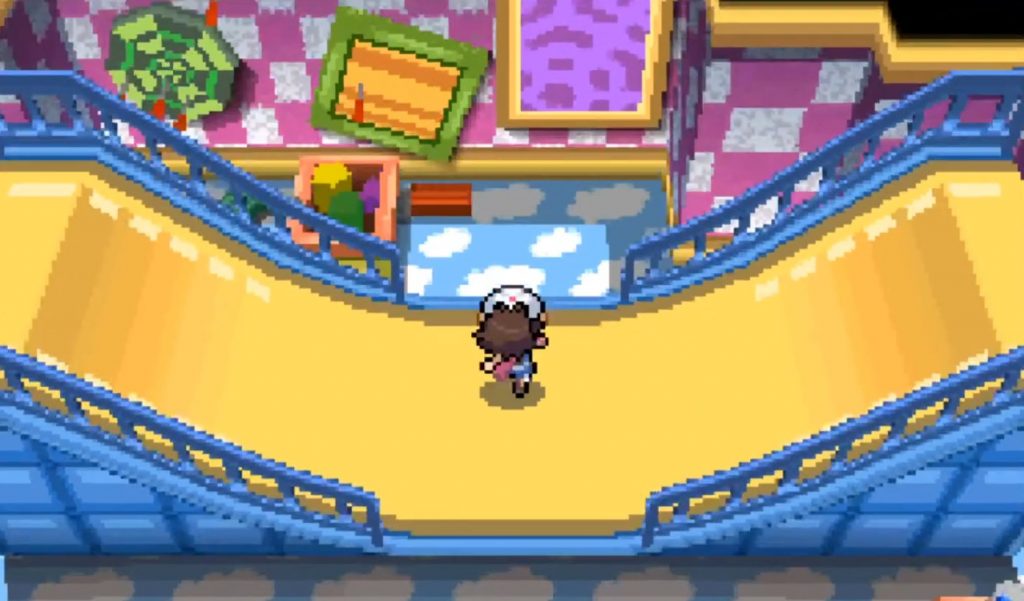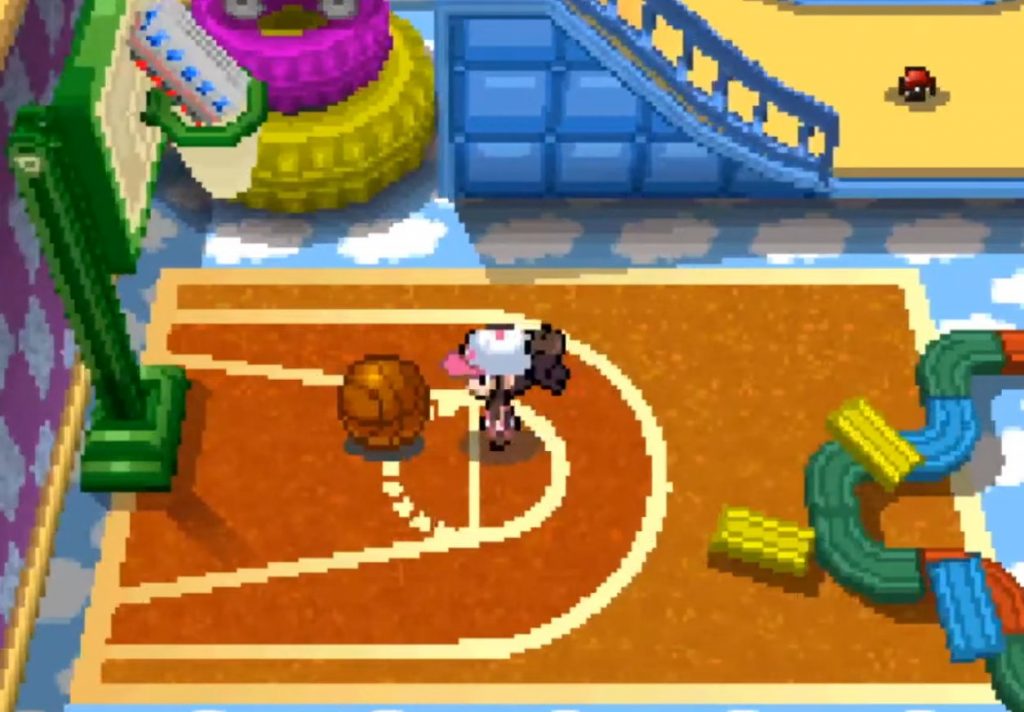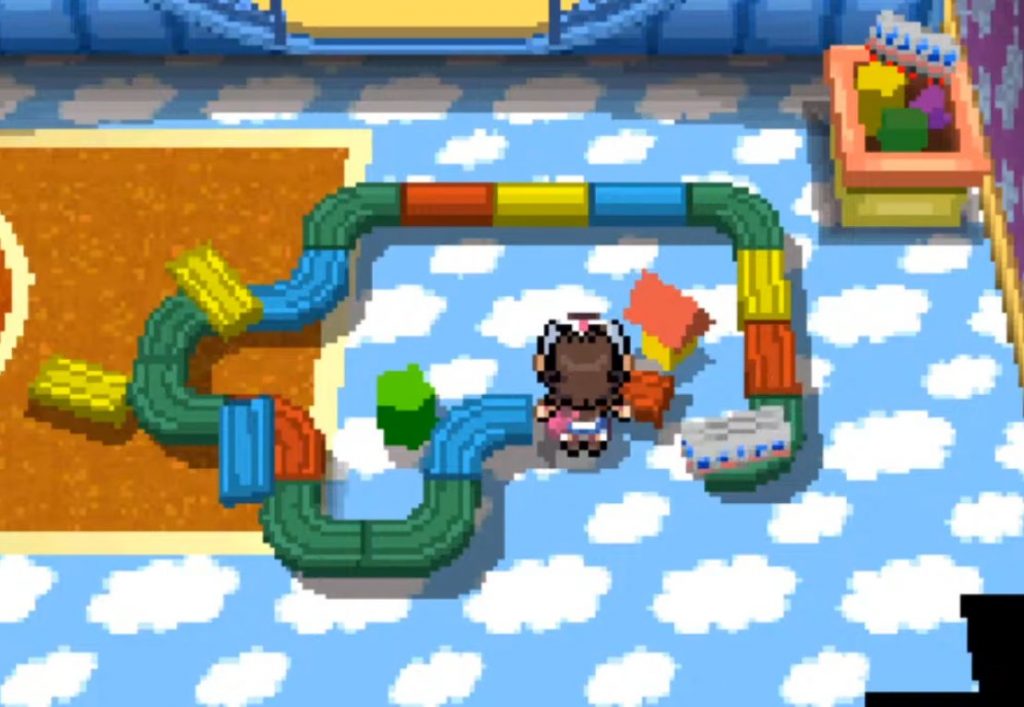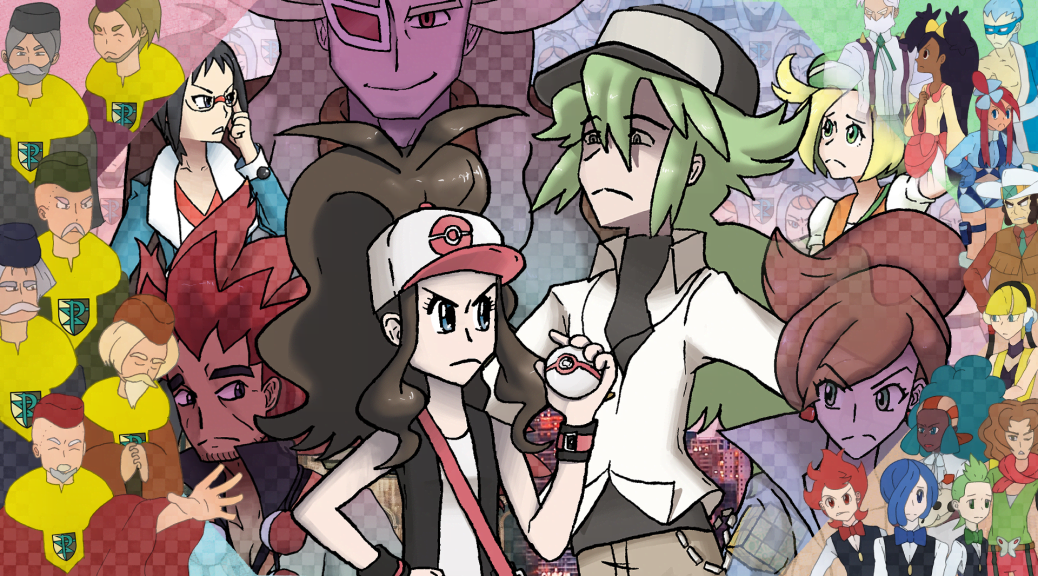Part II: The Chapters of Unova
For the anniversary of the release of Pokémon Black and White, we continue our tribute to the games. Part II focuses on the main storyline and its synthesis of narrative and gameplay.

Part II: The Chapters of Unova
Beginnings | Foundations | Castelia | Nimbasa | Driftveil | Chargestone | Icirrus
Dragonspiral | Reshiram & Zekrom | Relic Castle | The Stone | Opelucid | The League | N’s Bridge | The Sages
N’s Room | The End | Beginnings (Redux) | Kyurem | The Ruins | The End (Redux) | Champions
An Unnatural Environment
The world N was given is upside down.
A music box iteration of his theme plays. Clouds line the flooring rather than the walls. The sky, “universally associated with supernatural forces, a symbol of superiority, dominion, spiritual ascension, and aspiration,”1 being placed beneath N’s feet was Ghetsis’s way of instilling to N that he is above everything and everyone, the king of Team Plasma—no, of all of Unova. And with a combination of no windows and the castle being underground until Alder’s defeat, this was the only sky N could see. The wallpaper is a purple and periwinkle checkerboard pattern—not quite garish, but not particularly pleasant, either.

There is no bed, no place soft enough to sleep on. Instead, a half pipe takes up a large portion of the room. A Rare Candy rests upon it—a candy for Pokémon, surely not proper nutrition for a human. But N likely had to make do, as there’s no other hint of food he could have eaten, or even a place to sit down and eat a proper human meal.
If you spoke to the woman calling herself Concordia in an earlier room, you know Ghetsis showed N only abused and enraged Pokémon specifically to manipulate him into believing that was how they all ended up after encountering people. It should then come as no surprise that inspecting the half pipe shows it to be covered in Pokémon scratch marks, certainly the result of these very Pokémon. There’s also no place in this room for anyone to escape to or hide in if any of those Pokémon were to lose control.
 A train set is arranged oddly. It doesn’t loop on itself like train tracks should. The train rides back and forth pathetically, hypnotically, unsettlingly on these bright tracks. Inspecting it shows that it may have been played with recently—but this is N’s room, and he is a young man. Just how long has Ghetsis kept him in here?
A train set is arranged oddly. It doesn’t loop on itself like train tracks should. The train rides back and forth pathetically, hypnotically, unsettlingly on these bright tracks. Inspecting it shows that it may have been played with recently—but this is N’s room, and he is a young man. Just how long has Ghetsis kept him in here?
Examining the rest of the room reveals it was for far too long. A dart has been tossed into one of the art panels on the wall. A basketball, with the word “Harmonia” on it, seems to have been heavily used, but now lies still on the ground before the basketball hoop. Instead, a train car is stuck in the net. Behind the half pipe is a toy box filled with new toys—recent and untouched.
This is the world Ghetsis provided to N right up until his coronation. As this was his entire world, it was so thoroughly normalized to him that he likely never thought to question it. If you, instead, were to ask Ghetsis why he has done this, what would be his response? Would he drop the lies and tell you what Concordia already has? Or would he try to manipulate you with his words again and fake a justification? Perhaps he would respond with, just as he told Alder, “[I did] this out of kindness. Yes, kindness.”

In addition to the blatant symbolic imagery of the sky plastered upon the ground, other elements of N’s room also serve emblematic purposes. The first is the train set. As has been explored in Part I, trains—and, by extension, subways—can commonly stand for “the big city,”2 making it natural that N have a train set in his room. Unova itself is based on New York and comes complete with its own subway system, drawing a very obvious parallel between the train set and modern Unova. To further tie in to the theme of time, trains moving ever forward reflects the human perception of the passage of time.3 This will become all the more important as we explore the rest of N’s room and further establish the ways in which the toys are carefully curated to represent Black and White‘s themes.
 Trains may also serve as a symbol of Fatalism, the belief that everything in life is predetermined, as we are all captive to fate. The train has only one direction it can go: forward on its tracks.4 And just as the player is destined to become a hero, progressing the game ever-forward, N is also tied to a destiny—tracks laid out for him by Ghetsis’s manipulation. N is trapped by Ghetsis, evidenced by the trains laid out in a loop. A looping track is quite normal in reality, but it must be accompanied by stops for people to board and disembark as trains take people to new places. N has to make his own houses out of blocks to create makeshift “stops” for the train—he must seize his own destiny to break free of Ghetsis’s chains. And break free he does, literally, as the train tracks are no longer connected by the time you arrive. A piece is missing that breaks its loop, the beginning of N laying his own groundwork for his future as he deviates from Ghetsis’s plan by bringing you into the equation.
Trains may also serve as a symbol of Fatalism, the belief that everything in life is predetermined, as we are all captive to fate. The train has only one direction it can go: forward on its tracks.4 And just as the player is destined to become a hero, progressing the game ever-forward, N is also tied to a destiny—tracks laid out for him by Ghetsis’s manipulation. N is trapped by Ghetsis, evidenced by the trains laid out in a loop. A looping track is quite normal in reality, but it must be accompanied by stops for people to board and disembark as trains take people to new places. N has to make his own houses out of blocks to create makeshift “stops” for the train—he must seize his own destiny to break free of Ghetsis’s chains. And break free he does, literally, as the train tracks are no longer connected by the time you arrive. A piece is missing that breaks its loop, the beginning of N laying his own groundwork for his future as he deviates from Ghetsis’s plan by bringing you into the equation.
The next important item is the basketball. While the game originated in 1891,5 ball games as a whole hail from Mesoamerica. Most notably in cultures such as the Olmec, Maya, and Aztec,6 ball games had “special symbolic significance” in such civilizations due to the ball’s direct association with the sun. Just as the sun moves through the sky,7 the identically shaped ball gets passed around from player to player, almost always tossed through the air mirroring its celestial counterpart. With these ancient origins in mind, we can draw a connection to the ancient Unovan civilization, which placed Volcarona on the same level as a legendary Pokémon, or perhaps even a deity, due to its appearance as a sun of its own. In fact, the twin heroes myth of Unova may have been partly inspired by the Mayan twin heroes, Hunahpu and Xbalanque. Their exploits, chronicled in the Mayan sacred text, the Popul Vuh, revolve around defeating the gods of the underworld in a game of ball.8 While the twin heroes of Unova didn’t need to defeat any underworld deities, the story of Hunahpu and Xbalanque emphasizes the importance the Mayans held in the ball game,9 lending credence to the importance of the ball in N’s room and its association with the sun and ancient Unova. In addition, twin heroes and brothers of all sorts, both similar and opposing, are commonly recurring throughout numerous Indigenous American mythologies,10 again properly fitting inspiration for a region set in America, especially in regards to Unova’s origins.
In this way, aspects of N’s room encompass both the ancient and modern, encapsulating the theme of time, its progression, and its dichotomy in its entirety. What’s more, the train stuck in the basketball hoop is a blatant melding of the two times: the ancient lore of Unova and its founders combine with the modern methods N and Ghetsis use to enact their plan to herald a new king.
But returning strictly to the present, basketball is still a team game. The worn-down basketball is indicative of how much N must have played in-between sessions of being exposed to abused Pokémon. Bored out of his mind with almost all the time in the world, he surely got in ample practice—but what does it matter if N has no one to play the game with?
In the same way, N could be considered a prodigy of a Pokémon Trainer: he can speak to Pokémon directly, giving him an innate advantage over anyone else. As a result, he is always a few steps ahead of you in your mission to earn all the region’s badges and even to challenge the League. But just like playing basketball by yourself, what does it matter if N doesn’t have a rival?
Indeed, Ghetsis was grooming N to take down Alder, but Alder hardly qualifies as a rival to N. Everyone anticipated Alder to fall due to his negligence and growing rusty as a Trainer. N was brought up to believe he was a king, above all others, the sky itself beneath him, with no equals. But in the end, an equal was all he wanted, just as the original twin heroes had each other. Not just one hero entirely in the right who possessed all the power, but two peers who balanced each other out, both yin and yang.
N did not need to approach you in Accumula Town—that was not a part of Ghetsis’s plan. He did not need to continue to challenge you throughout your journey, he did not need to ask your Pokémon about what kind of person you are, he did not need to encourage you to seek out the other dragon, and he did not need to extend a bridge to you and give you the opportunity to challenge him within his castle walls. But he did. Just as he subtly began to disassemble the destiny Ghetsis laid out for him by taking apart the train tracks, N subconsciously desired an equal in spite of being raised as a basketball player without a team, a Trainer without a rival, a king above all mere commoners. Throughout your adventure in Unova, he found that equal in you.
So, naturally, your next course of action is to provide him with the battle he seeks.
